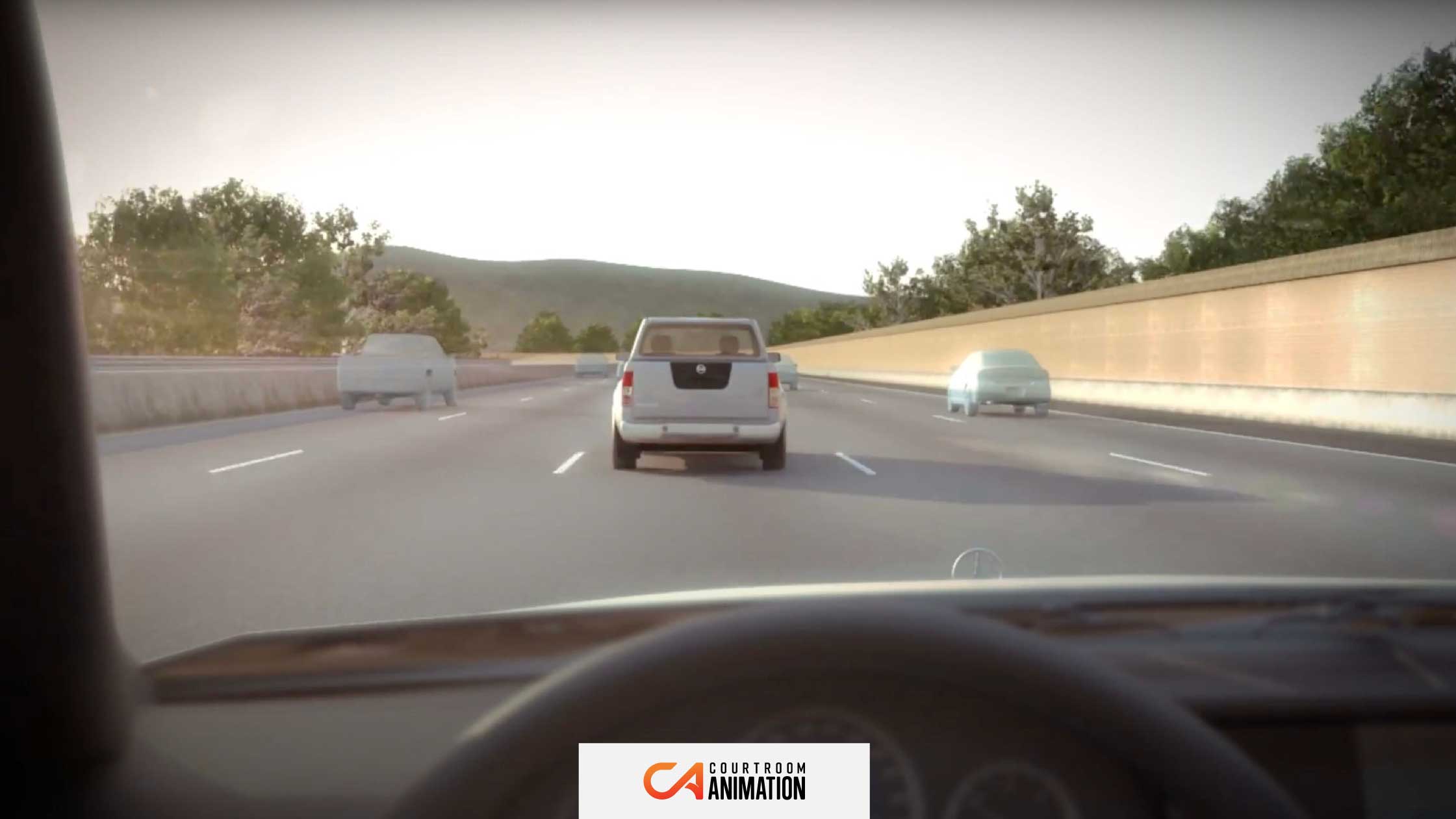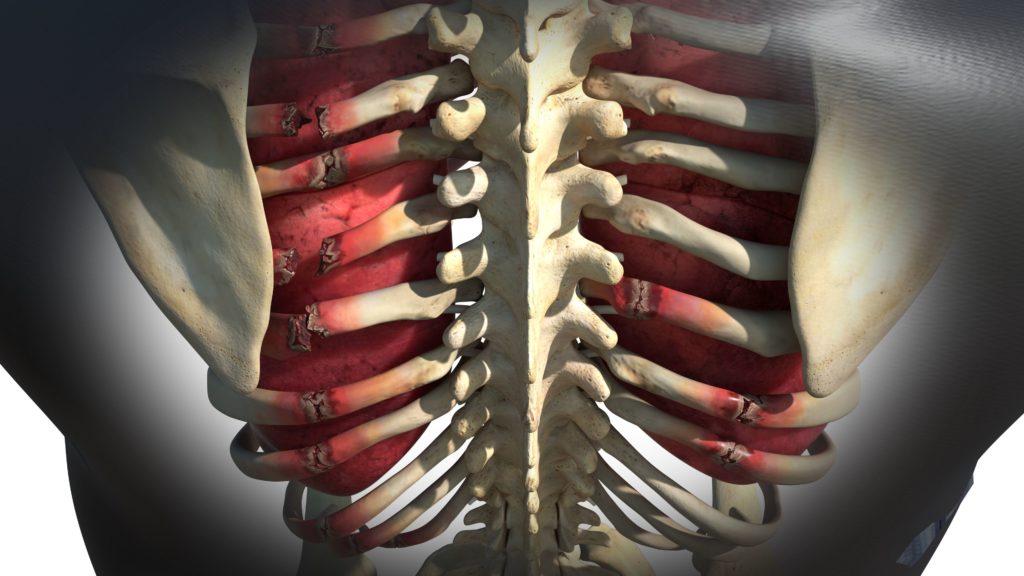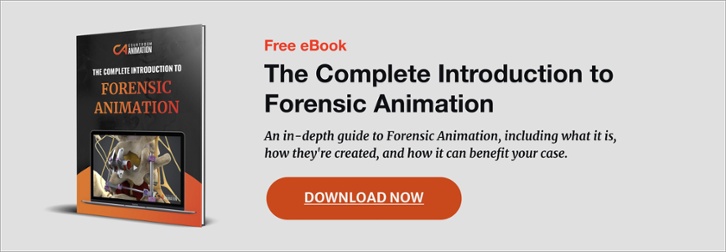
At trial, the stakes are obviously high. This is why it is common for many civil attorneys to use a visual during a courtroom presentation. To ensure admissibility and maximize the impact on the jury, it’s vital that any trial graphics you use are accurate and persuasive.
Trial graphics may sound synonymous with animations, but court graphics are still images while animations are a video. Stills and legal animations are both useful aids for the jury. And while our name implies we focus on legal animations, we also have extensive experience working on still trial graphics, which will be the focus of this post.
So, how can you decide if your case needs a legal graphic?
Many plaintiff and defense attorneys have found that legal graphics lead to a more favorable verdict, no matter the type of case they’re representing. If your client was in a car crash, then a legal graphic could illustrate the mechanism of injury. Or, it could illustrate alternate viewpoints that the plaintiff could have taken to avoid the collision.
“The brain works better in pictures. A lot of the information we encounter every day is abstract. If you associate it with a picture, it’s easier for the brain to latch onto.”
— Nelson Dellis, Memory Champion
Trial graphics are used in court for any complex civil case or if an attorney has a specific need. Here are some questions you can consider when deciding if your case can benefit from trial graphics.
Does the Opposing Counsel Have Trial Graphics?
If yes…
If the opposing counsel uses trial graphics, the jury could view your argument as unprepared or less persuasive in comparison. Graphics, and legal videos, have been shown to be highly influential to juries.
If your opposing counsel has trial graphics, it may not come as a surprise. You’ll likely have seen it ahead of time during mediation or settlement discussions, or on the exhibit list to ensure the trial exhibit is admissible.

Sample Trial Graphic from Courtroom Animation
However, if they have legal graphics, they might not accurately or fully reflect expert witness data. They could also be dramatizing the incident. For example, in an injury animation, the opposing counsel’s visual might depict more blood than necessary or medically accurate to shock the jury.
There are various things to watch out for in the opposing party’s trial graphics. Take these notions into consideration when the opposing attorney presents their visual:
- Determine if the court graphics match the underlying data set.
- If it’s a legal animation, check if they speed up or slow down time in inappropriate ways to cause confusion.
- Study if they use cameras with improper fields of view to represent human eyesight.
- Note if the visuals use improper lighting or texturing to make objects more or less conspicuous.
In short, whether you are using graphics or not, be sure to carefully evaluate those submitted by the opposing counsel.
If not…
If the opposing counsel is lacking a trial graphic, that gives you ample opportunity to gain an advantage. A law graphic helps the jury remember your case, and facilitates the understanding of any facts or processes they are unfamiliar with.
If you have contracted legal graphic services to create an accurate visual, then it proves you’re prepared to present your case to the jury. This can cause the opposing counsel to reconsider the trial, especially if they don’t have a legal graphic or medical illustration on hand.
This is why a litigation graphic improves your chances of a pre-trial settlement as well. When armed with a compelling and persuasive graphic, the opposing attorney might discuss a new settlement offer with their client.
If you still go to trial with your court graphic, then it allows you to further solidify your core argument(s) into a digestible format.
If you’re considering trial graphics, download this
free checklist to prepare your case and more.
Is Your Expert Witness Testimony Complex?
This question is critical to decide if you want legal graphics for your case. If your expert witness has a technical background, and the subject matter is hard to understand, then a legal graphic is the perfect solution.
Cold data or reports with walls of text can be hard for the jury to comprehend. An average juror will likely not immediately grasp technical expert witness explanations, such as operative reports or a patient’s medical data.
To ensure your argument is understood throughout the courtroom, a trial graphic can offer you that reassurance while giving the jury an immersive experience.
Can Trial Graphics Work with Your Client’s Budget?
If a legal animation is complex, several minutes long, and from multiple perspectives, it could be costly. Since a trial graphic is a still image and not as detailed as a 3D animation, having even a handful of legal graphics is likely less expensive than a full-length trial animation.
In general, if your budget is under a few thousand dollars, a forensic animation is likely not your best data visualization option. It’s simply not viable to create a complex animation professionally and accurately with such a budget. In that case, a medical illustration or trial exhibit is an alternative that utilizes the key properties of an animation, but at a lower price.
“The [trial graphics] provided by Courtroom Animation clearly illustrated the product’s failure, and they worked with our experts to make sure the visuals were fair and accurate.”
– Donald J. Magilligan “Duffy,” Attorney at Cotchett, Pitre & McCarthy, LLP law firm
You should now have a general idea if your civil case can benefit from trial graphics. Make sure to meticulously analyze the opposing counsel’s court graphics. If they do not have any, then you have an opportunity to engage the jury with a visual of your own.
As legal graphics are not as intensive to create as a legal animation, they are more flexible to fit into the budget for any case. If you want to learn more about how legal animation is created, download your copy of our free eBook, “The Complete Introduction to Courtroom Animation.”

Topics: